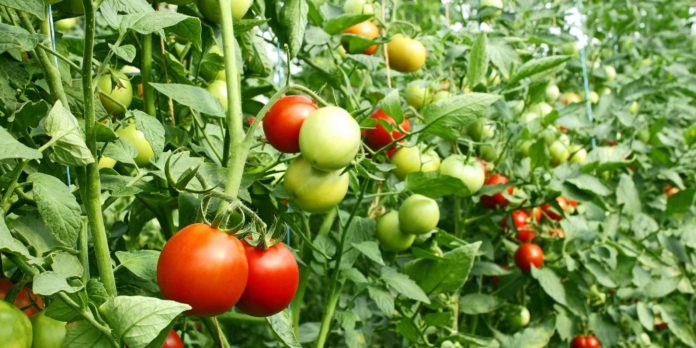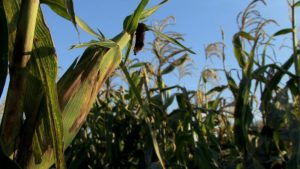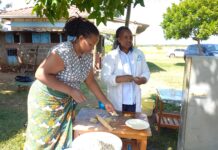By Katheru Njagi
Nairobi, Kenya: The early rains that flooded Jeremiah Kimani’s village this year have sown more confusion than joy among farmers like him.
At his farm in Ichuga village in Laikipia County, they nurtured the ankle-high maize seedlings already flapping with life. But he is not sure if the young crop will weather the dry stretch that has began to set in.
Like many farmers here, Kimani was expecting the rains mid-October, but heavy showers in early September caught him off guard.
“I was preparing my land for the planting season but the rains came,” says the 50-year-old. “I took the risk and planted even though I was not sure it would continue raining.”
Unlike many farmers here, the gamble that Kimani took may pay off. It could also cost him an entire crop if the searing heat persists. But he is not worried.
Kimani enlisted with Kilimo Salama, which translated into English reads safe farming. It is an index based insurance contract that compensates farmers for losses incurred due to erratic weather.
The scheme offers seed and fertilizer payoffs to farmers to enable them to start all over again after experiencing crop failure, according to Joram Kirira, an official with Syngenta Foundation in central Kenya.
Before the Foundation introduced the scheme in Kenya in 2009, Kimani’s narrative as a farmer was one riddled with uncertainty, confusion, and isolation.
During his reflective moments, he remembers the post-independence days when agriculture was widely accepted as a key pillar of the economy.
“The government had recruited agriculture extension officers to transfer skills to farmers in rural areas and that is why farmers were doing well,” he recalls.
But corruption, climate change, and the collapse of world food prices slowly crippled the once buoyant sector. Neglect by the government led to mass resignation by extension officers.
Kimani, like many other farmers, says this is when he knew what it was like to be poor.
Later in the last decade when the government re-introduced agriculture extension services, many farmers were hopeful that the sector would begin to recover. But another challenge lingered.
“The agriculture officers are doing a good job,” says Kimani. “But each is expected to serve a very wide region and so they are unable to reach most of us.”
This is where innovations like crop insurance come in, to serve farmers struggling with the pressures of climate change and emergencies like COVID 19, he says.
Crop insurance can also be used to shield farmers from post-harvest losses, says Romanus Osabohien, a lecturer at Covenant University, Nigeria.
In a continent where most road networks are underdeveloped and where more than half of the farmers live in rural areas, transportation of produce from farms to the market has been a big challenge. About 30 percent of this product does not reach the market due to post-harvest losses, he says.
And lack of social protection and insurance could be the reason why the agriculture sector has not performed well in the last decade, where performance has been lower than in other regions like Asia, says Osabohien.
For instance, in the last decade, agricultural productivity in Africa has increased by less than one percent and has only contributed about 40 percent of employment opportunities.
This is why governments must invest in digital innovations, social protection, and insurance if the continent is to achieve SDGs one and two by 2030, he says.
“We want to see African countries achieve SDGs on poverty reduction and food security through agriculture productivity. Governments can achieve this by increasing social protection and insurance coverage for smallholder farmers,” says Osabohien who is also one of the 2019 IITA Fellow.
Dennis Maina, 30, is a coffee farmer from central Kenya. Unlike Kimani’s complaints about unpredictable rainfall, Maina is troubled by the long cold season in this part of Kenya.
His cash crop lost all its berries last season due to coffee berry disease, which experts associate with prolonged cold.
Like other farmers here, the father of one had the option of spraying chemicals to prevent the spread of the disease.
“The chemicals have become too expensive,” says Maina. “I was not able to afford it because I spent my savings to support my family and relatives.”
For his loss, he will receive cash compensation from the Syngenta Foundation to see him through until the next crop cycle.
Following the success of crop insurance in Kenya, a good number of indexes have been developed elsewhere in Africa.
First was the crop insurance for staple and cash crops, as pastoralists joined later with the livestock-based one targeting beef trade.
Meanwhile, lobby groups have criticized the index insurance innovation, with some alleging it is one of the clever schemes by multinational companies to test genetically modified products in Africa.
“We doubt if it is in the interest of Africa because policymakers are under a lot of pressure from biotechnology companies to commercialize GMOs,” says Wanjiru Kamau, the Kenya Biodiversity Coalition spokesperson.















